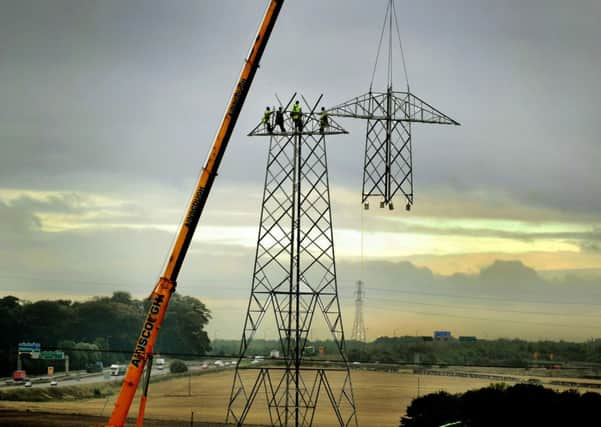Picture Post: Powering Yorkshire and putting us on the grid


But pylons are now as familiar to us as motorways and railway lines, and while purists might view them as a blot on the landscape we wouldn’t be able to watch TV or charge our mobile phones without them.
In other words, they have become as essential to the modern world as water and sunlight were to our ancestors in days of old.
Advertisement
Hide AdAdvertisement
Hide AdHere we can see workers for Balfour Beatty in the process of constructing a pylon for the National Grid, not far from Knaresborough.
Pylons have been part of our landscape since the 1920s as the country started building the vast electricity network we recognise today.
For some, these transmission towers are actually a thing of stark beauty and both photographers and pylon-spotters have come to appreciate the geometry of the lattice structure.
Poets, too, have found inspiration in the march of grey steel across the landscape. So popular was pylon imagery in the 1930s that it even lent its name to a school of poetry.
Advertisement
Hide AdAdvertisement
Hide AdIn Stephen Spender’s poem, The Pylons, he described them in rather risqué terms as being: “Bare like nude, giant girls that/have no secret.”
Pylons themselves have changed little since they were first introduced, although in 2011 a design contest was run by the Royal Institute of British Architects for Department of Energy and Climate Change and National Grid, to find a potentially prettier version that we might build in the future.
There are now more than 88,000 pylons in the UK, they stand at 50 metres high, weigh 30 tonnes and carry up to 400,000 volts of electricity.
The people who build and maintain them, like the men in luminous jackets you can see in this picture, not only help power the nation they need a head for heights, too.
It might not be glamorous, but then quite often some of the most important jobs aren’t.
Tech Details: Nikon D3S, Nikon 400mm lens, exposure of 1/500th sec @ f5.6, ISO 500.